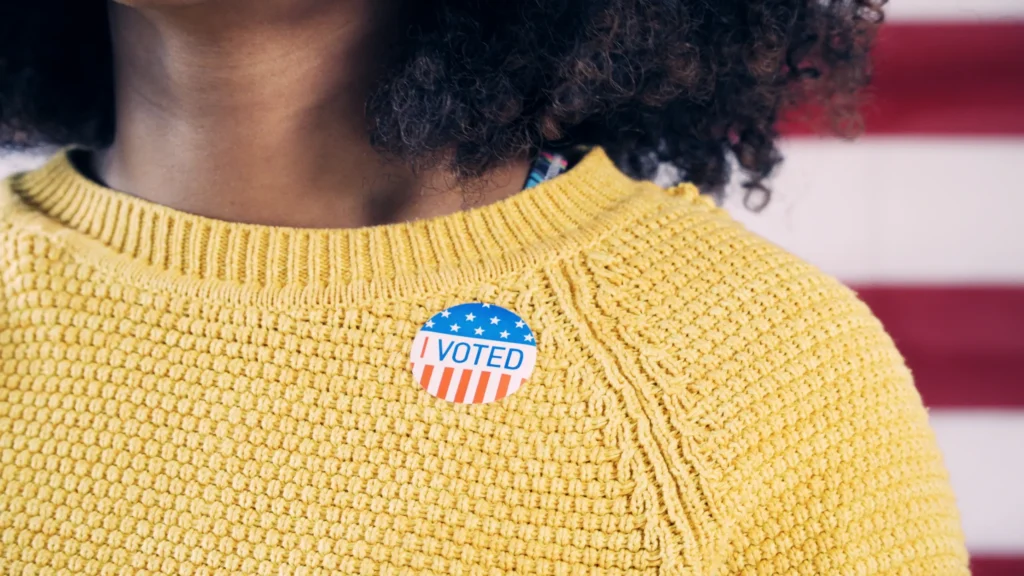As the 2024 elections loom on the horizon, political analysts and campaign strategists are turning their attention to Gen Z, a demographic that is poised to play a pivotal role in shaping the electoral landscape. Born between the late 1990s and the early 2010s, Gen Z makes up a significant portion of the electorate. What sets this generation apart is not just their digital savviness or social activism but the pronounced gender divide that influences their political preferences and behaviors. Understanding this divide is crucial for predicting how this demographic might sway the upcoming elections.
How Gen Z’s Gender Divide Influences 2024 Elections
Gen Z’s gender divide is becoming one of the most critical factors in shaping the 2024 elections. Recent polling data reveals a significant split between male and female Gen Z voters in terms of their political affiliations and priorities. While young women in Gen Z tend to lean more towards progressive and liberal policies, their male counterparts are more heterogenous, with a notable portion gravitating towards centrist and conservative viewpoints. This divergence is not only reflective of broader societal trends but is also reshaping how political parties target young voters.
Campaign strategists are taking note of this gender divide, tailoring their messages to resonate differently with male and female Gen Z voters. For female voters, issues such as reproductive rights, climate change, and social justice are paramount. In contrast, male Gen Z voters are often more concerned with economic policies, national security, and technological innovation. This dichotomy is pushing political campaigns to adopt nuanced approaches, employing targeted advertisements and digital outreach strategies that address the distinct concerns of each gender within the Gen Z cohort.
Moreover, the gender divide within Gen Z is influencing the platforms and policies that candidates are emphasizing on the campaign trail. For instance, Democratic candidates are increasingly championing policies that cater to the progressive inclinations of young women, such as student debt relief and comprehensive health care reforms. On the other hand, Republican candidates are focusing on issues that resonate more with male Gen Z voters, including job creation, fiscal responsibility, and regulatory reforms. This tailored approach underscores the importance of the gender divide in shaping not just voter turnout but also the broader electoral discourse.
Youth Voter Dynamics: A Gendered Perspective on 2024
The dynamics of youth voters in the 2024 elections reveal a complex interplay of gendered perspectives that could be decisive. For one, the turnout rates among young women are expected to be higher than those of young men, a trend consistent with previous elections. This higher engagement among female Gen Z voters could amplify the impact of progressive policies and candidates, potentially tipping the scales in battleground states where every vote counts. Political parties are acutely aware of this and are investing heavily in mobilization efforts targeted at young women.
Male Gen Z voters, while more varied in their political leanings, represent a critical swing group that could influence tight races. Unlike their female counterparts, male Gen Z voters do not exhibit a monolithic political identity, making them a challenging yet valuable demographic for both political parties. Republicans see an opportunity to galvanize this group through promises of economic stability and national security, while Democrats are working to attract male voters by addressing issues like tech industry growth and digital privacy.
The gendered perspective on youth voter dynamics also reveals how social media and digital platforms are being leveraged to engage with Gen Z. Female Gen Z voters are more likely to use platforms like Instagram and TikTok, where social advocacy and influencer-driven campaigns can sway opinions. Male Gen Z voters, meanwhile, are more active on platforms like YouTube and Reddit, where discussions about policy specifics and ideological debates are more prevalent. Understanding these digital habits is crucial for campaigns aiming to effectively reach and influence these young voters in the lead-up to the 2024 elections.
As the 2024 elections approach, the gender divide within Gen Z is emerging as a critical factor that could shape the outcome. This generational split not only influences how political messages are crafted and disseminated but also determines voter turnout and engagement levels. By recognizing and addressing the distinct priorities and behaviors of male and female Gen Z voters, political parties can better position themselves to capture this influential demographic. Ultimately, the evolving landscape of youth voter dynamics underscores the need for a nuanced and data-driven approach to campaigning in the digital age.









